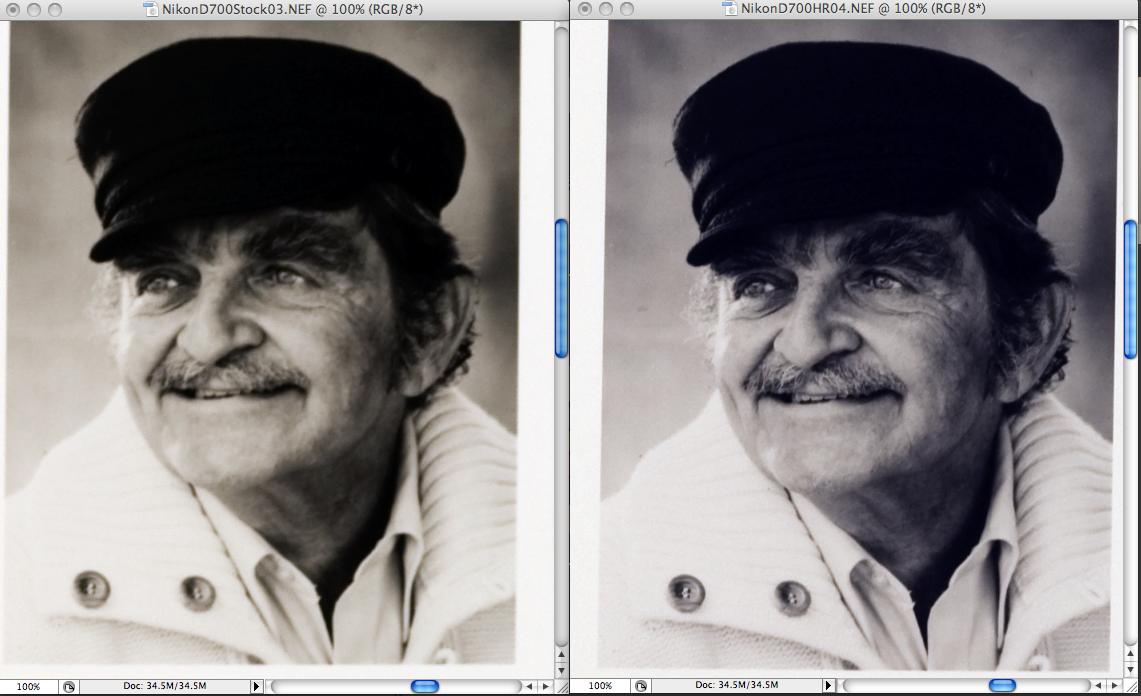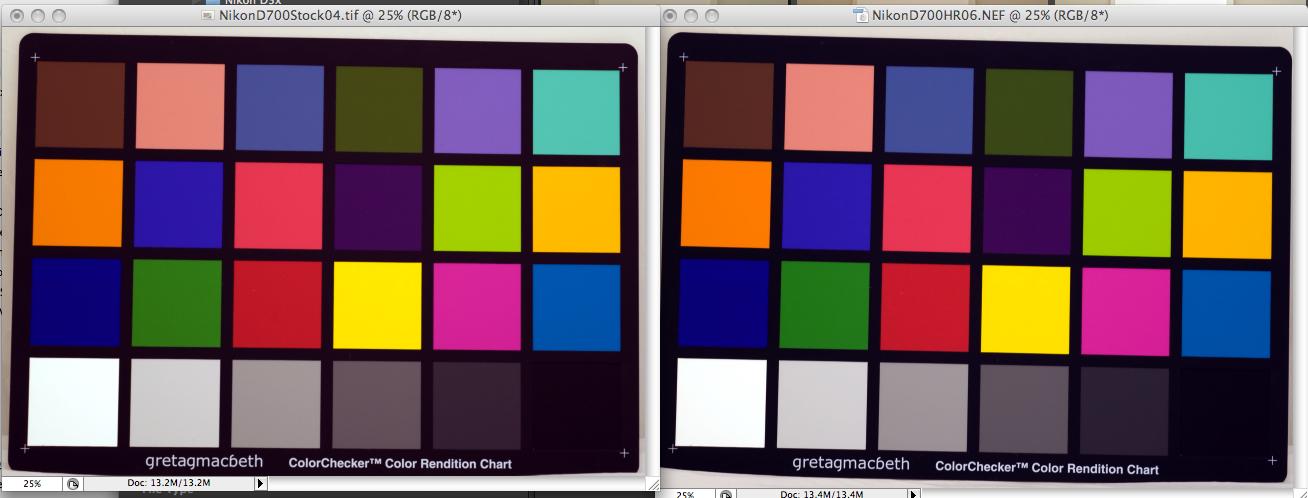Results for a Nikon D700 converted to HR.
Equipment setup:
| - | Same Nikon D700 body before and after |
| - | Same Coastal Optics (now Jenoptik) UV-VIS-IR APO lens set at F8 |
| - | Charts used: Kodak Digital Science TL-5003, Gretagmacbeth Color Rendition Chart and Imatest LW/BH Chart |
| - | Closed room lighting with combination of incandescent and fluorescent lighting |
| - | Charts and camera used inside diffuse lighting box |
| - | Cameras on tripods. Shutter set to timed release to avoid camera shake |
| - | No settings changed on camera before and after |
Modulation Transfer Function (MTF) measurement. MTF is a way to scientifically quantify the sharpness of a system. The graph shows you how well the camera measures sharpness with the smaller details towards the right and the amount of sharpness as the height. You can see that the stock camera had an MTF of 0.02 at 0.5 cycles/pixel while the HR camera had an MTF of 0.10 at 0.5 cycles per pixel - a 5x improvement at that sharpness. At a 0.1 cycles per pixel, both camera behave about the same which means that both cameras are equally as good at broader details.
MTF measures the whole system: camera, lens, chart, camera steadiness, etc. If any one item is off, then MTF of the system will be compromised. By trying to use the highest quality lens set at the sharpest F stop, controlling the lighting, shooting on tripods with timed shutter release and such, we can understand the difference in the HR conversion for this setup. Of course, if you are using an inferior lens, your camera is shaking, etc, you will not get the same results with your D700HR. If you have a better setup, you might get better results.
Stock camera results on left and HR is on right. You can download a TIFF by clicking on the picture.
Kodak TL-5003 test chart selections at 100% zoom
Gretagmacbeth Color Rendition chart. Note how the stock camera doesn't not handle grays as well turning the grey slightly brown while the HR is more neutral.



